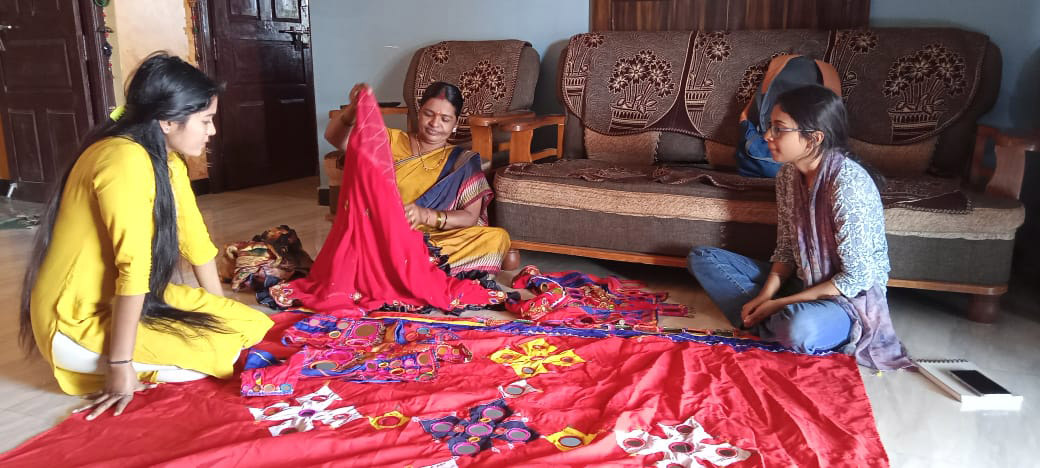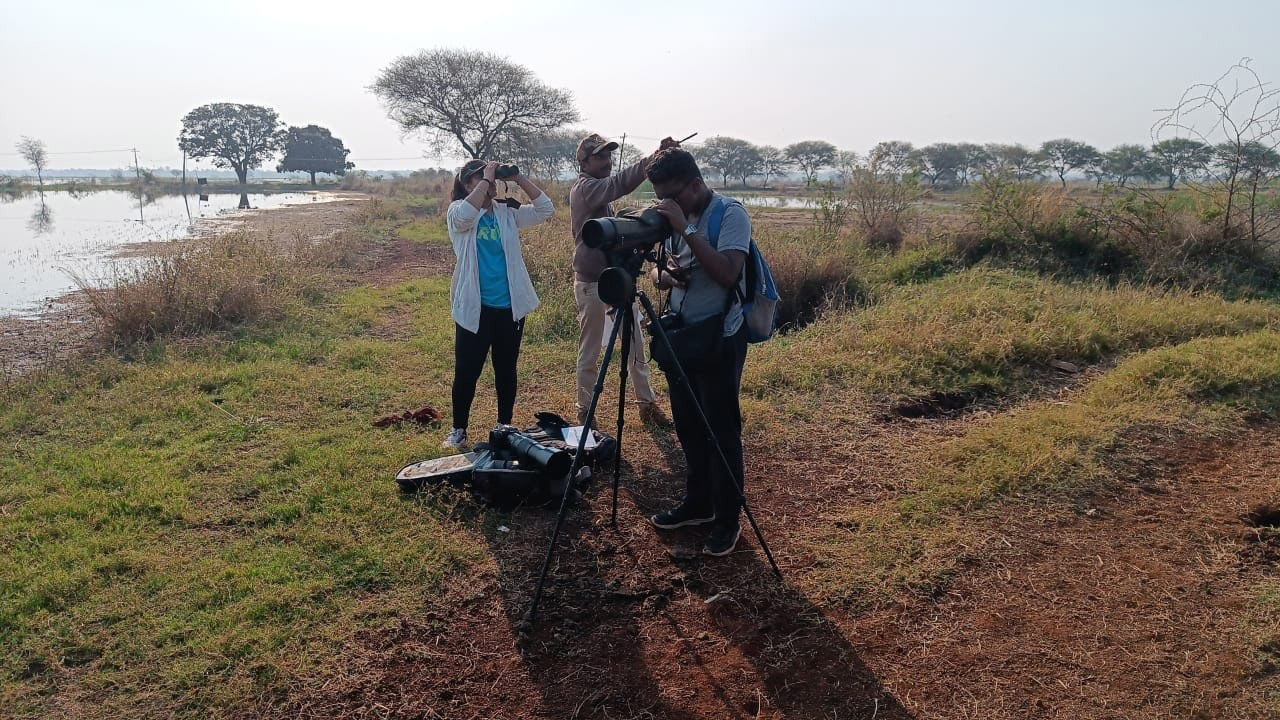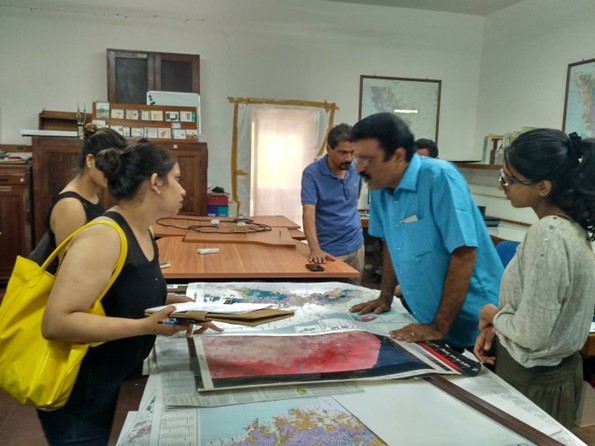"Being a planetary citizen does not need space travel. It means being conscious that we are part of the universe and of the earth. The most fundamental law is to recognize that we share the planet with other beings, and that we have a duty to care for our common home" - Vandana Shiva, Oneness vs The 1%: Shattering Illusions, Seeding Freedom

Learning from the living practices in the UNESCO Chair focus regions Source: Law, Environment & Planning Cluster, SMI
About the Programme
Have you wondered why a planning solution that worked in one city does not work in the other? Have you felt there is so much to learn from places and the ways of life they foster? Have you been drawn to the development discourse in the public realm? Do you think your practice can make a difference to the ways we inhabit a place? Do you believe collaborative planning and action is the way forward to mitigate the pressures of development? In this program more such questions related to places can shape out practice. We will learn and develop our creative practice from the complex lived realities of people, their socio-cultural relationship with the landscape and the varied governing systems (state-driven or culture-driven).
This is a signature program offered by the UNESCO Chair in Culture, Habitat and Sustainable Development at Srishti Manipal. Urban Design, Sustainability and Conservation is an innovative, trans-disciplinary post-graduate course that blends current research and practices from the Social Sciences and Design. Students learn through place-based studios, trans-disciplinary projects, and on-going community-engaged collaborative projects at Srishti Manipal.
The course is designed to support and encourage students to imbibe values and world views through an inquiry-led learning from the regions where our faculty have been carrying out practice-based research. This program is designed to encourage learners to negotiate the boundaries between urban & rural region; Culture, Geography & Landscapes; Community, Development & Governance; through debates and concerns that are particular to the habitats both human and more-than-human located in the Global South. A vision to generate an alternative practice informed by creative methods & experimental approaches is at the heart of this program.
Course Structure
- Disciplinary and Interdisciplinary studios
- Workshops
- Seminars
- Lines of Inquiries (Field work, Case Studies, Investigations, individual or Group Projects, Transdisciplinary Research)
- Theory and Understanding
- Independent Study
- Open Elective
- Practice
- Exhibitions
- Culminating Performances of Understanding (Portfolio, Transdisciplinary research, Projects, Colloquium, Capstone/Dissertation)
- Knowledge Enhancement (ability or skills)

Learning about scoio-ecologiacal systems through practice-based research Source: Law, Environment & Planning Cluster, SMI
Learning Approach
Learning at the postgraduate level is driven by the lines of inquiries that are enacted through studio based learning, workshops, theoretical reflections and field work. This approach cultivates a practice through engagement in diverse contexts, collaborative and participatory approaches leading to knowledge development.
Program learning approaches include:
- Review current methods and theories of planning and policy-making
- Use grounded research and design thinking to engage with settlements, inhabitants and their everyday practices
- Experiment through inquiry-led locative practice and recognize the global implications
- Collaboration among peers, practitioners and the community.
- Using real life opportunities to create and test interventions and processes in community spaces.
Capabilities
On successful completion of the course, graduates will have developed a knowledge base that includes fields of urban and regional planning, and cultural, economic, social and environmental sustainability. Further students would acquire the following capabilities:
- to have conceptual clarity around the inter-relation between emergence of a settlement and everyday practices
- to evaluate the implications of policies and systems governing human settlements for advocacy, public and social good.
- to engage in professional and academic writing with the intent for furthering practice. (such as proposals, grant writing, case stories/studies, design reports, dissertation etc).
- to making meaning of cultural landscape of a place or region (using tools such as inventorying, mapping, and community study)
- for experimenting with the design and planning of places of different spatial scales and diverse contexts through transdisciplinary approach.
- to plan and design in a participatory manner, as part of a multidisciplinary group and with local community

Meeting with research and advocacy organisations to learn from their projects and archives Source: Law, Environment & Planning Cluster, SMI
Opportunities
This course provides an opportunity for practitioners interested in pursuing careers in non-governmental organisations, advocacy firms and institutions, research organisations, academic institutions, and practice-based studios at the helm of re-envisioning transformational aspects of settlements, both urban and rural and everything in-between.
People
Enquiries

Disciplinary Intersections
The program in Urban Design, Sustainability, and Conservation is informed by the following learning disciplines:
Critical Geography
Cultural Studies
Curatorial Studies
Design Management
Design Research
Ecology and Environment
Heritage & Conservation
History
Policy Studies and Environmental Law
Public History
Research – Art and Design
Service Design
Spatial
Sustainability Studies
Urbanism / Urbanity & Built Environments
Research and Collaboration
Students have opportunities to work within the academic structures and/or work across the following centers and labs:
Deccan Living Labs
designEarth Lab
ICOMOS-Srishti Collaborative
IMPACT EDGE
Srishti Films
SUI-Srishti Collaborative
Team YUVAA, Bidar
The Kabir Project
LeNS Lab
The UNESCO Chair in Culture, Habitat, and Sustainable Development
FAQs
The program in Urban Design, Sustainability, and Conservation is a two-year professional program. It prepares one to understand and analyze areas in urban and semi-urban settings, and to design these better as spaces, forms, networks, landscapes, and systems. It also seeks to increase appreciation of the value of inherited cultures and the natural environment of a place, and the need to integrate these in the planning and design of places.
If you believe that culture and nature is valuable, in makeing our cities better, more livable, and a more humane place, and that you want to be part of a movement for sustainability, then this course is for you.
This program is driven by the lines of inquiries that are enacted through studio based learning, workshops, theoretical reflections and field work. Many of the studios and the capstone projects would have field-work/professional project components so as to provide experience in working in different contexts, places, and communities.
The program in Urban Design Sustainability and Conservation would open up the following opportunities to successful graduates:
- Become a design and planning consultant / entrepreneur
- Employment in research and development organizations, NGOs & social enterprises working in any field of built environment, cities, heritage, sustainability and resilience.
- Employment with museums and galleries
- Become an academic in a design program.
The program also allows you to apply into a PhD program in a related area.Students interested in continuing with a PhD program can apply for the Integrated MPlan PhD program. Further details can be found on our admissions page.
All admission and fee related information could be viewed on our admissions page.



